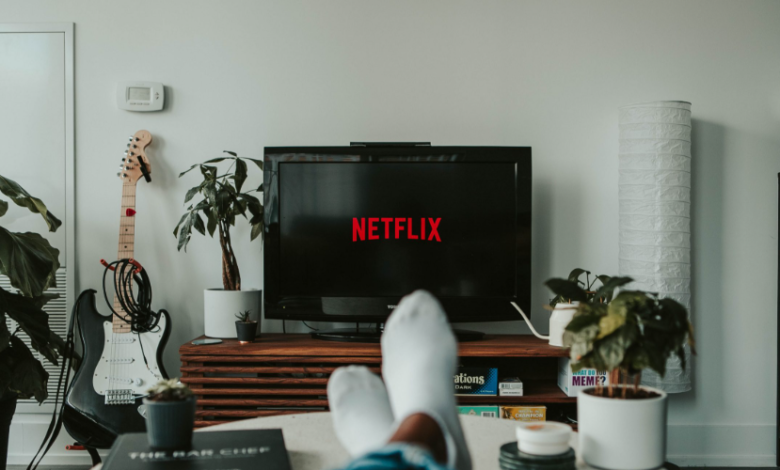How Streaming Services Are Changing the Way We Watch Movies and TV

In recent years, streaming services have revolutionized how we consume movies and television shows. Gone are the days when viewers were bound by fixed schedules and limited channel choices. Today, the digital revolution has delivered unprecedented convenience, customization, and variety right to our fingertips. This article explores how streaming services are transforming our entertainment habits, reshaping the industry, and what this means for the future of media consumption.
Introduction to Streaming Services
What Are Streaming Services?
Streaming services are digital platforms that deliver movies, TV shows, and other video content over the internet, eliminating the need for physical media or traditional broadcast methods. Popular platforms like Netflix, Hulu, Amazon Prime Video, and Disney+ have become household names, offering vast libraries accessible on demand.
Rise of Streaming Platforms
The concept of streaming isn’t entirely new, but rapid improvements in internet speed and technology have catapulted these services into mainstream popularity. What started as niche platforms for select content has expanded into comprehensive entertainment hubs, attracting millions of subscribers worldwide.
See also: Top 10 Trends Shaping the Future of Entertainment in 2025
Brief History of Movie and TV Viewing
Traditionally, movie watching was reserved for cinemas, and TV viewing was confined to scheduled programming on cable or satellite networks. This limited flexibility and choice until DVRs and later streaming services began to shift control from broadcasters to consumers.
The Shift from Traditional TV to Streaming
Decline of Cable and Satellite TV
Streaming services have driven a significant decline in traditional cable and satellite TV subscriptions. Cord-cutting—a trend where consumers cancel cable in favor of internet-based services—has gained momentum, spurred by lower costs and a richer viewing experience.
On-Demand Viewing and Its Appeal
Viewers no longer need to plan their schedules around TV listings. Streaming offers on-demand access, enabling users to watch any title whenever they want, creating a personalized viewing schedule that fits modern lifestyles.
Impact on Movie Theaters and Broadcast Networks
While theaters continue to thrive for blockbuster releases, many studios now simultaneously release movies on streaming platforms, changing how audiences access new films. Broadcast networks face pressure to innovate as viewers seek diverse and original streaming content.
Convenience and Accessibility
Watching Anytime, Anywhere
One of the biggest advantages of streaming is the ability to watch content anytime and anywhere—be it on a smartphone during a commute or on a smart TV at home. This flexibility has greatly enhanced the user experience.
Multi-Device Streaming
Streaming platforms support a variety of devices, including smartphones, tablets, laptops, smart TVs, and gaming consoles, providing seamless access across multiple screens and enabling families to enjoy different content simultaneously.
Personalization of Viewing Experience
Streaming services tailor recommendations based on individual preferences, viewing history, and even time of day. This personalization helps users discover new content that aligns closely with their tastes, making the experience more engaging.
Impact on Content Creation and Distribution
New Opportunities for Filmmakers and TV Producers
Streaming platforms have opened new doors for creators, allowing smaller studios and independent filmmakers to reach global audiences without traditional gatekeepers.
Global Reach and Diverse Content
Unlike conventional media, streaming services cater to international audiences, offering a broad array of genres, languages, and cultural perspectives, enriching the global entertainment landscape.
Original Programming and Exclusive Releases
Original content—such as Netflix’s “Stranger Things” or Disney+’s “The Mandalorian”—has become a key competitive edge, drawing subscribers eager for unique and exclusive shows not available elsewhere.
The Role of Algorithms and Personalization
How Algorithms Recommend Content
Streaming services use sophisticated algorithms to analyze user behavior and preferences, creating customized content suggestions designed to maximize viewer engagement.
Benefits and Drawbacks of Personalization
While personalization enhances user experience by reducing search time, it can also create “filter bubbles,” limiting exposure to diverse viewpoints or genres.
Enhancing User Engagement
These algorithms keep users hooked by suggesting next episodes, similar shows, or hidden gems, thereby increasing viewing time and platform loyalty.
Changes in Consumer Behavior
Binge-Watching Phenomenon
Streaming popularized binge-watching—consuming multiple episodes or entire seasons in one sitting—which has changed how stories are told and how viewers interact with content.
Social Viewing and Virtual Watch Parties
Many platforms now support synchronized viewing with friends and family remotely, adding a social dimension to streaming even when physically apart.
Subscription Fatigue and Consumer Choices
As the number of streaming platforms grows, consumers face “subscription fatigue,” making them selective and encouraging bundled services or content aggregation apps.
Economic Impacts on the Entertainment Industry
Revenue Models of Streaming Services
Subscription fees dominate, but ad-supported tiers and pay-per-view models also exist, altering how revenue is generated and shared across the industry.
Effects on Advertising and Licensing
Traditional TV advertising budgets are shifting as marketers follow audiences to streaming platforms, often focusing on targeted ads and branded content.
Job Market Shifts in Media Production
Streaming’s demand for vast amounts of content has created new job opportunities in writing, production, post-production, and tech, though it also disrupts traditional roles.
Challenges and Controversies
Content Overload and Decision Fatigue
With thousands of titles available, viewers often struggle to decide what to watch, sometimes leading to frustration despite the abundance of choice.
Privacy Concerns and Data Usage
Streaming platforms collect extensive data on viewing habits, raising concerns about privacy and data security in an increasingly digital entertainment ecosystem.
Competition and Market Saturation
The explosion of services leads to fierce competition, content exclusivity wars, and occasional platform closures, impacting consumer experience and content availability.
The Future of Streaming and Media Consumption
Emerging Technologies: VR, AR, and Interactive Content
Virtual and augmented reality, along with interactive storytelling, promise to further transform how audiences engage with movies and TV.
Potential Integration with Traditional Media
Hybrid models may emerge, blending live TV, streaming, and interactive elements to provide holistic entertainment experiences.
Predictions for the Next Decade
Experts foresee continued growth, consolidation of platforms, enhanced personalization, and even more immersive content formats reshaping the industry.
Frequently Asked Questions (FAQs)
Q1: What makes streaming different from cable TV?
Streaming delivers content over the internet, allowing on-demand access and no fixed schedules, unlike traditional cable TV.
Q2: Are streaming services cheaper than traditional TV?
Often yes, streaming can be more affordable, especially without expensive equipment rentals or bundled channel packages.
Q3: How do streaming services affect movie theaters?
They provide an alternative to theaters, with some movies releasing simultaneously on platforms, though theaters remain vital for blockbuster experiences.
Q4: Can I watch live events on streaming platforms?
Many services now offer live sports, news, and events, bridging the gap between streaming and traditional broadcast TV.
Q5: Is binge-watching harmful?
While enjoyable, excessive binge-watching can impact health and sleep, so moderation is advised.
Q6: How do streaming services use my data?
They collect viewing habits to recommend content, target ads, and improve services, which raises privacy considerations.
Conclusion
Streaming services have undeniably reshaped the way we watch movies and TV, offering unmatched convenience, personalized content, and global access. As this dynamic industry continues to evolve, viewers are empowered with more choice and control than ever before. Embracing these new habits allows us to enjoy entertainment tailored uniquely to our lifestyles, marking a bright future for media consumption.


